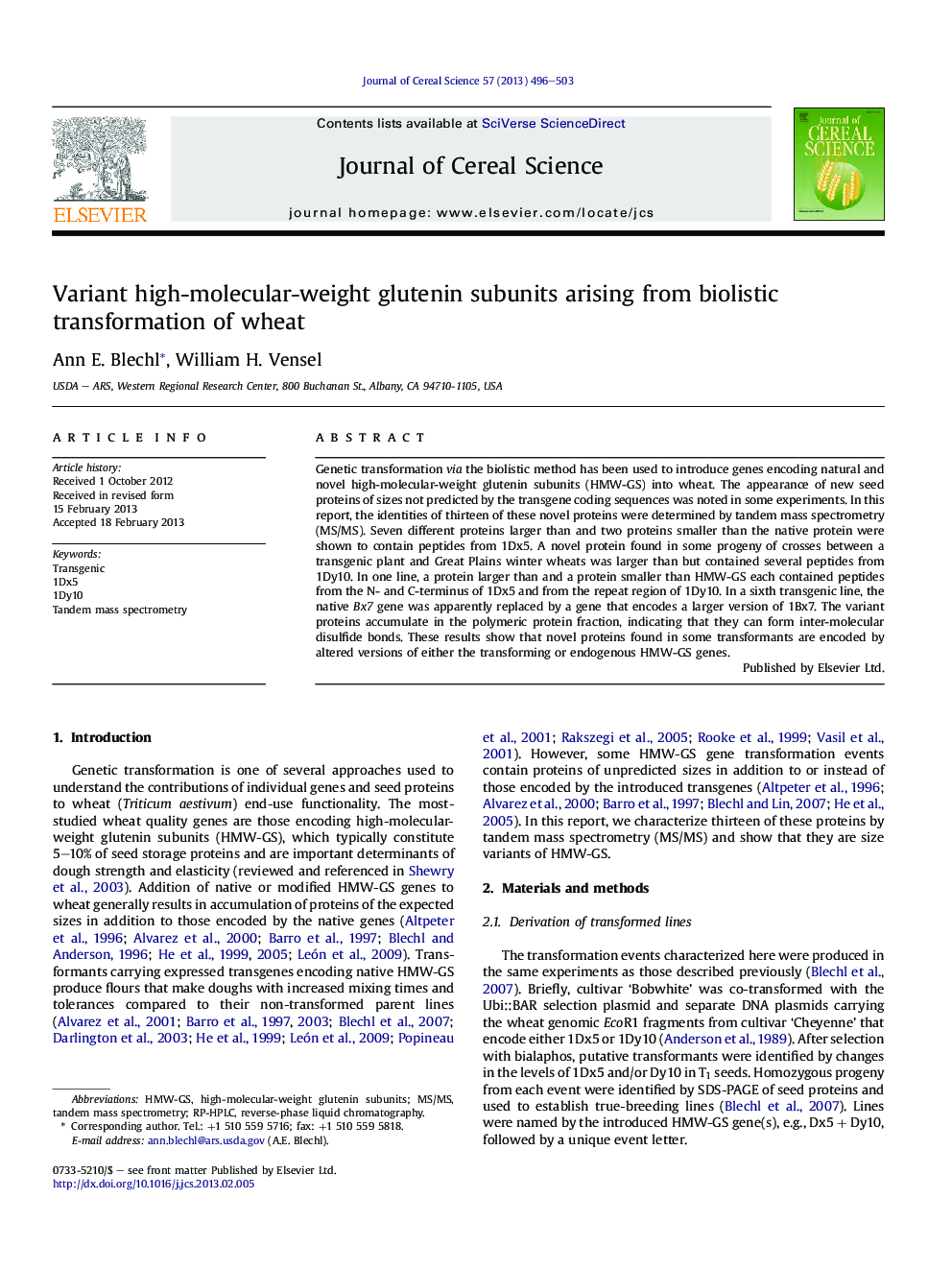| Article ID | Journal | Published Year | Pages | File Type |
|---|---|---|---|---|
| 6377946 | Journal of Cereal Science | 2013 | 8 Pages |
â¢Biolistic transformation results in proteins other than those encoded by the introduced genes.â¢Tandem mass spectrometry identified the proteins.â¢The new proteins are high-molecular-weight glutenins bigger or smaller than the native proteins.â¢The mechanism for generating these size variants is unknown.
Genetic transformation via the biolistic method has been used to introduce genes encoding natural and novel high-molecular-weight glutenin subunits (HMW-GS) into wheat. The appearance of new seed proteins of sizes not predicted by the transgene coding sequences was noted in some experiments. In this report, the identities of thirteen of these novel proteins were determined by tandem mass spectrometry (MS/MS). Seven different proteins larger than and two proteins smaller than the native protein were shown to contain peptides from 1Dx5. A novel protein found in some progeny of crosses between a transgenic plant and Great Plains winter wheats was larger than but contained several peptides from 1Dy10. In one line, a protein larger than and a protein smaller than HMW-GS each contained peptides from the N- and C-terminus of 1Dx5 and from the repeat region of 1Dy10. In a sixth transgenic line, the native Bx7 gene was apparently replaced by a gene that encodes a larger version of 1Bx7. The variant proteins accumulate in the polymeric protein fraction, indicating that they can form inter-molecular disulfide bonds. These results show that novel proteins found in some transformants are encoded by altered versions of either the transforming or endogenous HMW-GS genes.
